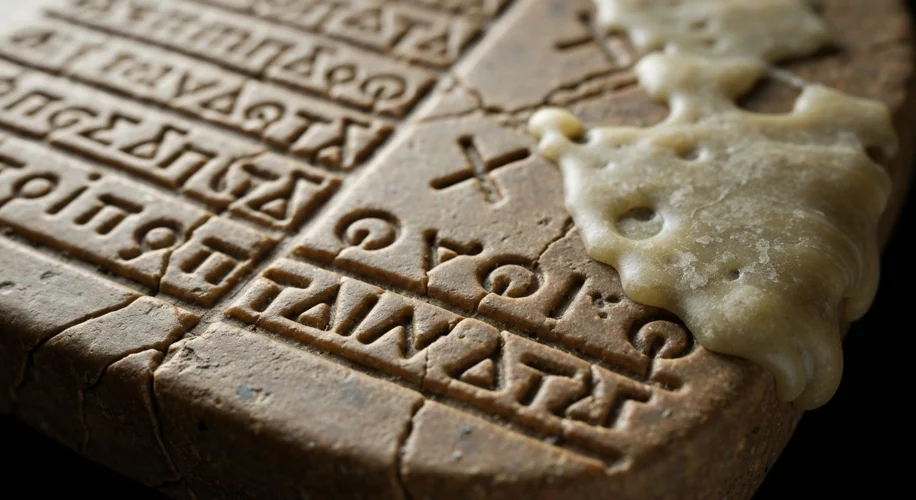In the sun-drenched landscapes of ancient Greece, two humble substances, honey and wax, played roles far exceeding their simple appearances. They were not mere commodities; they were threads woven into the very fabric of life, from the epic verses of Homer to the philosophical debates of Athens and the vast Hellenistic kingdoms.
Our journey begins with the immortal tales of Homer, where honey is not just a sweetener but a divine nectar. In the Odyssey, the wise Circe offers Odysseus honeyed wine, a gesture of hospitality and perhaps a hint of magic. The suitors feasting in Odysseus’s hall gorge themselves on honey-cakes, a symbol of their decadent and uninvited presence. Honey was associated with the gods, a food fit for Olympus, and its presence in a household signified prosperity and abundance. It was believed to prolong life and was even used in funerary rites, a sweet balm for the journey to the underworld.

Beyond the epic poems, honey permeated daily life. It was the primary sweetener, a crucial ingredient in both food and medicine. Ancient Greek physicians, like Hippocrates, lauded honey’s healing properties, using it to dress wounds, soothe coughs, and treat various ailments. Its antibacterial qualities, though not understood scientifically then, were empirically recognized. Imagine the bustling agora, the marketplace alive with the scent of roasted meats drizzled with honey, the bakeries offering honey cakes, and the apothecaries dispensing honey-based remedies.
Wax, on the other hand, served a more practical, yet equally vital, purpose. The primary source of wax was, of course, from beehives, often collected alongside honey. Its most prominent use was in writing. Before the widespread adoption of parchment and papyrus, wax tablets, known as pinakes, were the go-to writing material for everyday notes, accounts, and even school lessons. A stylus would be used to scratch letters into the softened wax. The tablet could then be smoothed over, erasing the contents for reuse. This made it an economical and versatile tool for everything from scribbling philosophical jottings in the Lyceum to recording trade transactions in Corinth.

Religious ceremonies also heavily relied on both substances. Honey was offered to deities as a libation, a sweet tribute meant to appease and honor. Temples often had sacred apiaries, with the honey collected from these hives considered particularly blessed. Wax, particularly in the form of candles and votive offerings, illuminated sacred spaces and symbolized prayers ascending to the heavens. Imagine the flickering candlelight in a dimly lit temple, the air thick with the scent of burning beeswax and the murmur of prayers, as worshippers offered their hopes and supplications.
The Hellenistic period, a vast era stretching from the death of Alexander the Great to the Roman conquest, saw the enduring significance of honey and wax amplified across a much wider geographical and cultural stage. In Alexandria, the intellectual hub of the Hellenistic world, scholars meticulously documented the properties of honey and wax. Treatises were written on beekeeping, honey preservation, and the diverse applications of wax, from cosmetics to the creation of intricate molds for bronze casting. The vast empires of the Hellenistic rulers, such as the Seleucids and the Ptolemies, facilitated trade networks that ensured a steady supply of these precious commodities, distributing them across a vast expanse from Greece to India.
In the arts, wax found a new dimension. Sculptors used it to create models for their bronze works, employing the “lost-wax casting” technique, a method that allowed for the creation of incredibly detailed and lifelike statues. Imagine the intense heat of the forge, the molten bronze flowing into the void left by the vanished wax, and the slow reveal of a masterpiece.

Even in the realm of politics and public life, these humble items played their part. Official decrees and important documents were often sealed with wax, its malleability allowing for the impression of official seals, a mark of authenticity and authority. A broken wax seal was a sign of tampering, a breach of trust.
From the honeyed words of a poet to the practicalities of a scribe’s wax tablet, from the sacred offerings in a temple to the creation of monumental sculptures, honey and wax were inextricably linked to the essence of ancient Greek civilization. They remind us that history is not just made of grand battles and political intrigue, but also of the small, sweet, and useful elements that sustained everyday life, connecting the divine to the mundane, the epic to the ordinary, and the past to the present.

